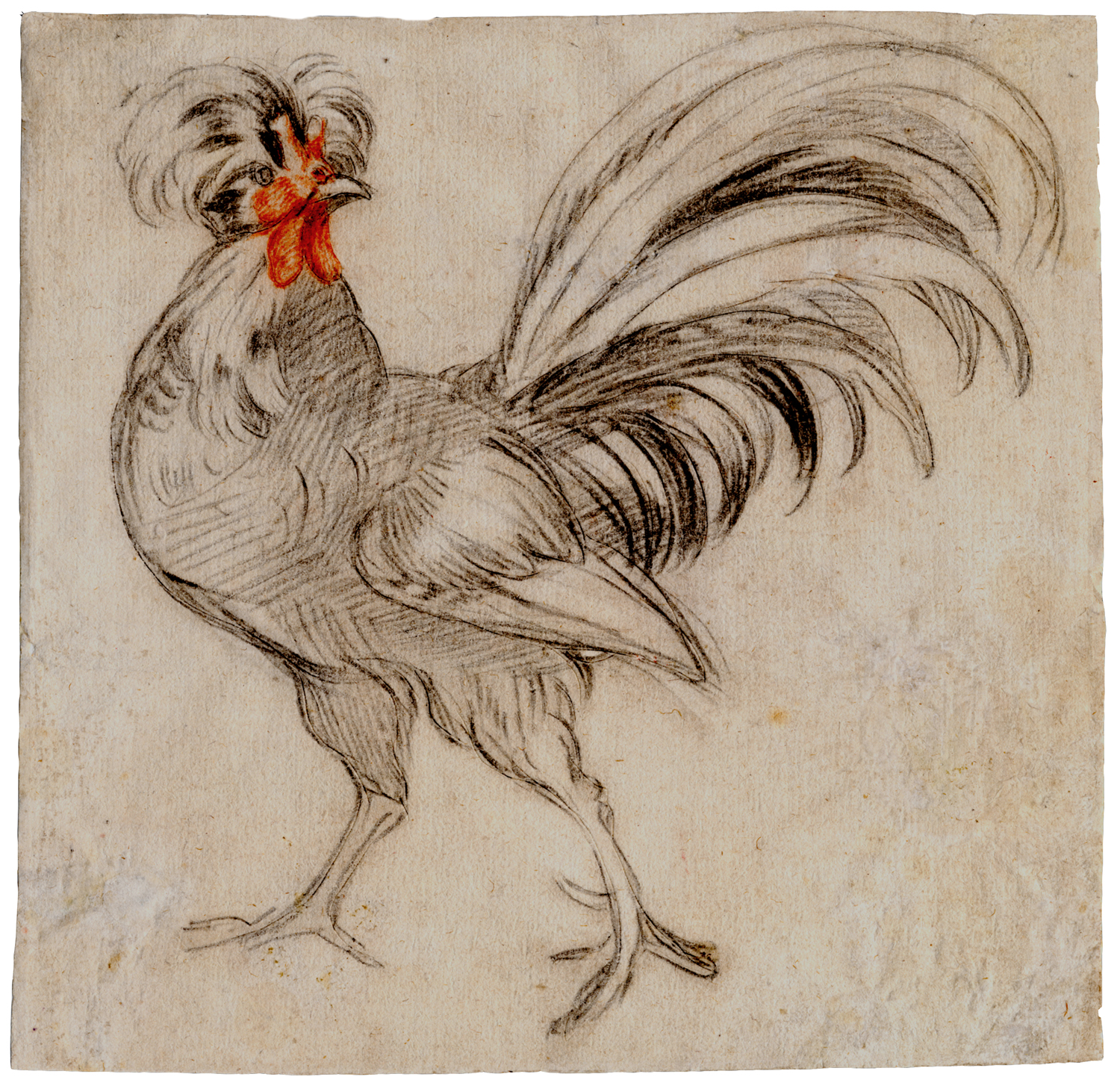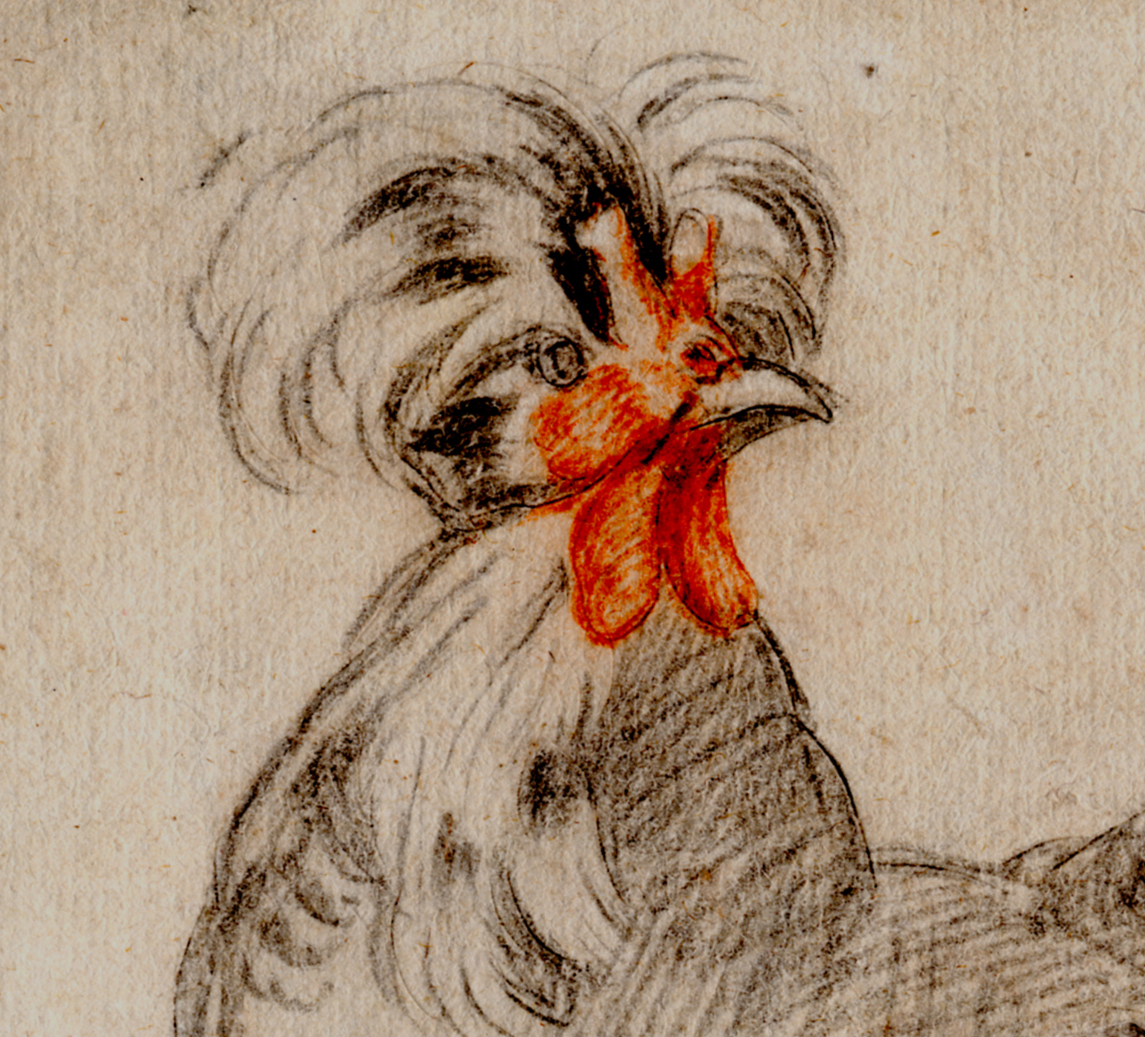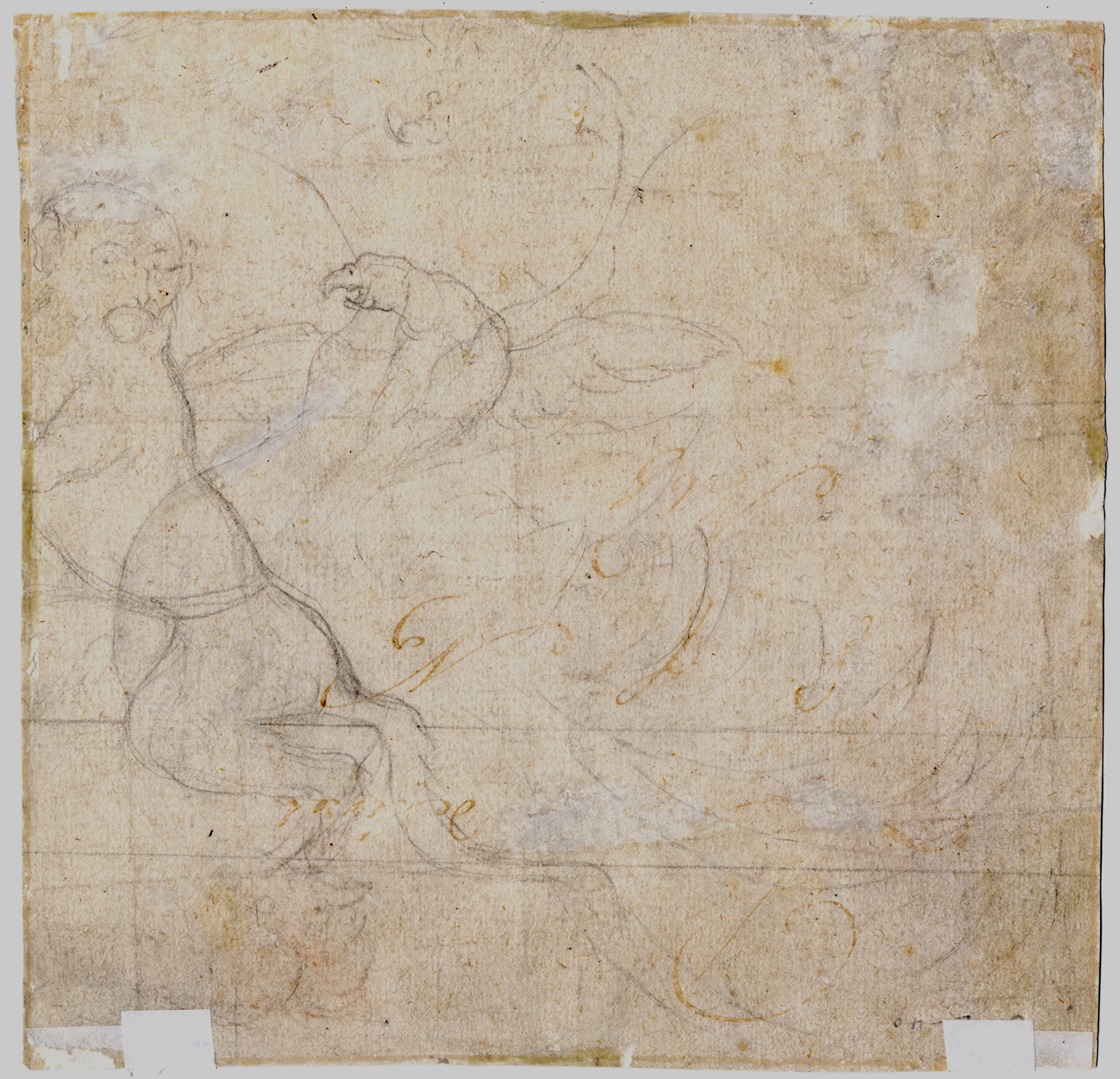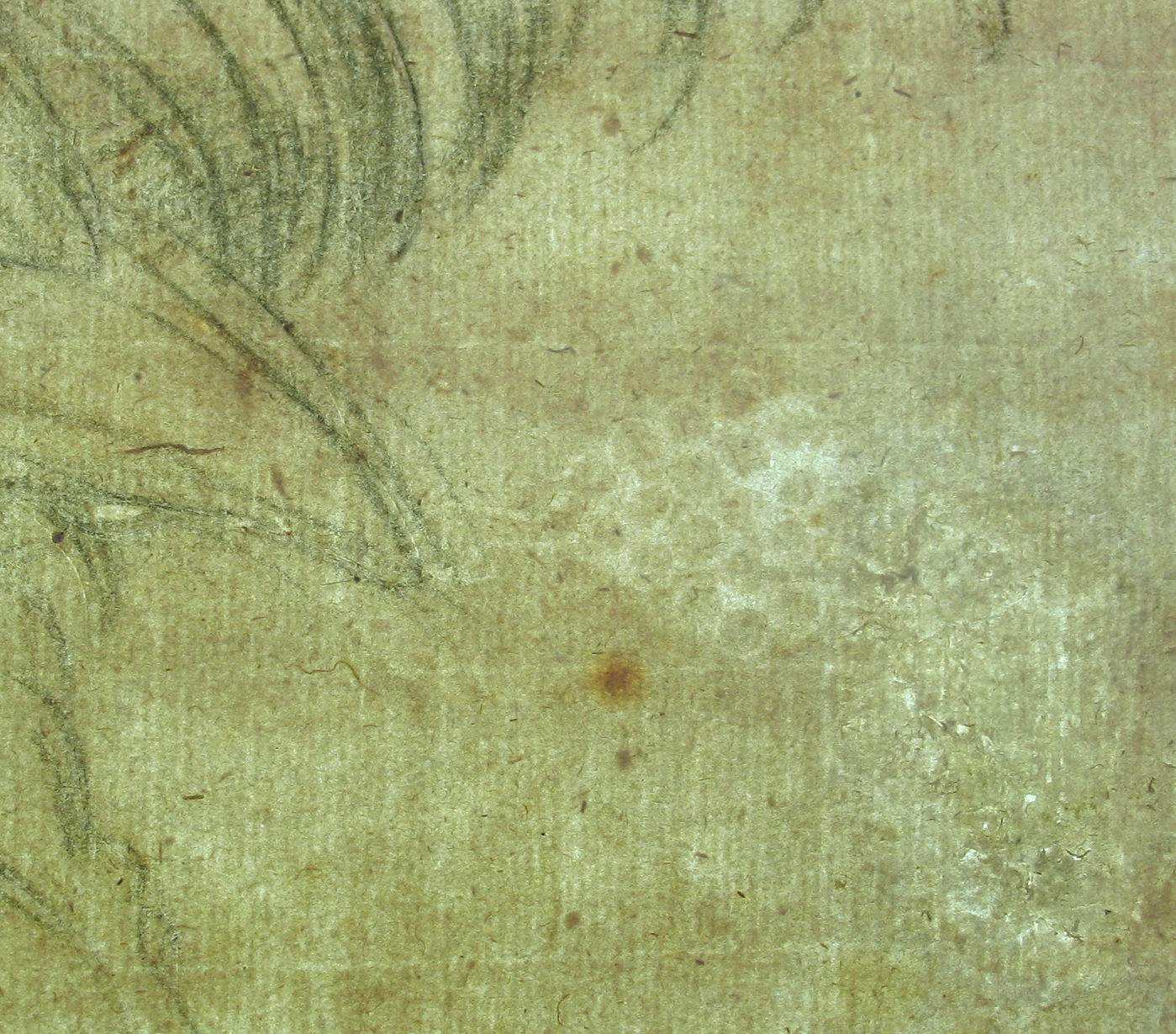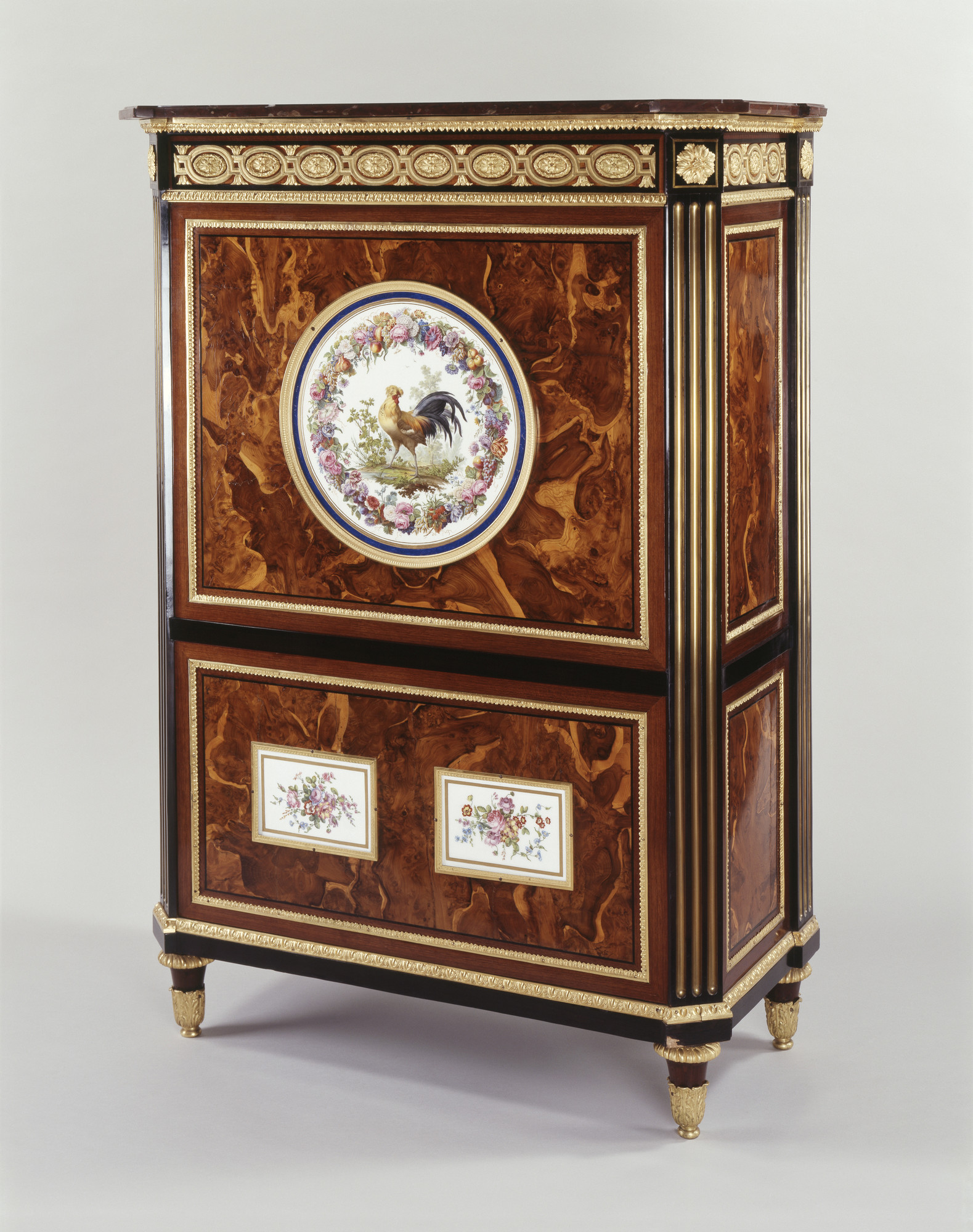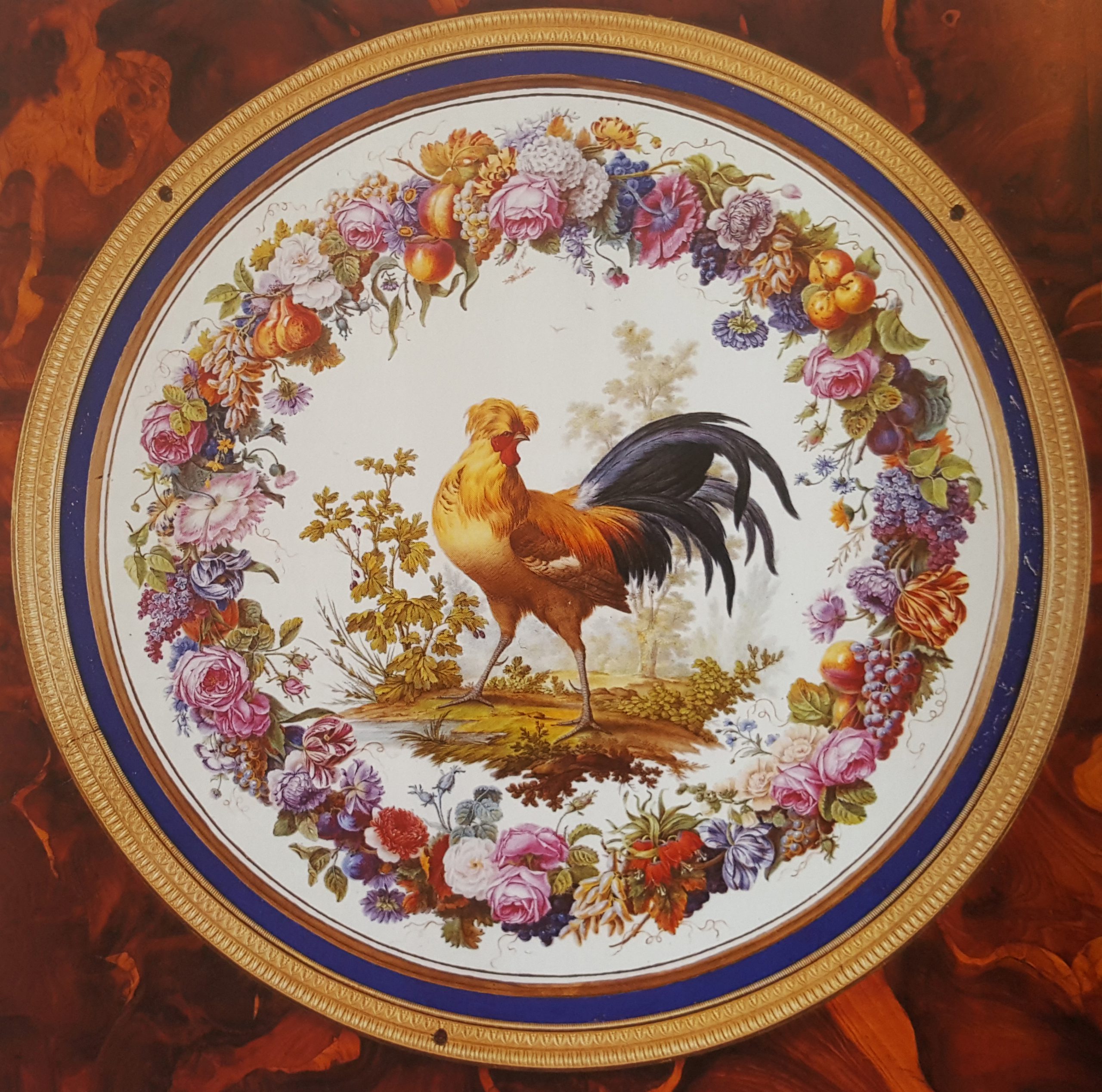PEETER BOEL (Antwerp 1622 – 1674 Paris)
Peeter Boel (Antwerp 1622 – 1674 Paris)
Study of a Rooster (recto)
Studies of a Parrot and a Monkey (verso)
Black and red chalk, the outlines incised for transfer (recto); graphite (verso), watermark bunch of grapes, 226 x 234 mm (8.9 x 9.2 inch)
Provenance
- Christie's, Amsterdam, 12 November 1990, lot 162
- Private collection, United Kingdom
Literature
Geoffrey de Bellaigue, French porcelain in the collection of her Majesty The Queen, London 2010, vol. III, p. 1010, fig. 288.1
***
Peeter Boel is best known as a painter of hunting scenes and still-lifes of birds and game in the tradition of Frans Snyders and Jan Fyt.1 His smaller compositions featuring a hare or a few birds depicted in the open air owe much to Fyt. He also created large-scale compositions, with fruit, flowers, game and precious objects, many of which convey vanitas connotations. His undisputed masterpiece is the monumental vanitas still life entitled An Allegory of Worldly Life in the Musée des Beaux-Arts in Lille.
Baptised in Antwerp on 22 October 1622, Peeter Boel was born into a family of artists. His father, Jan Boel, was an engraver, publisher and art dealer; his uncle, Quirin Boel the elder was also an engraver, as was his brother, Quirin Boel the younger. Peeter was probably a pupil of Frans Snyders and later of Johannes Fyt, who is named as Boel’s teacher in the biographical notes compiled by Jan Erasmus Quellinus. Probably during the late 1640s, Peeter travelled to Rome and Genoa, where he stayed with his uncle, the painter and art dealer Cornelis de Wael. In 1650, he became a master of the Antwerp Guild of St. Luke. His marriage to Maria Blanckaert took place about the same time: the couple had four children. After 1668, the artist moved to Paris, where he supplied designs to the Gobelins tapestry factory. In 1674, he was appointed Peintre Ordinaire to Louis XIV, but he died in Paris on 3 September of that year. A large collection of oil sketches and drawings of animals from this period is preserved in the Musée du Louvre.
In 1792 this drawing was used as a model for the decoration on a Sèvres plaque, painted by Philippe Castel (active 1772-1797), which was fired on 19 December 1792, and was added to a late 18th-century secretaire between 1802 and 1805, bought in that year by the Prince of Wales, later George IV, and still in the Royal Collection today (fig.).2
SOLD
1. For the artist, see: Madeleine Pinault Sorensen, Sur le vif: dessins d'animaux de Pieter Boel (1622-1674), Paris 2001.
2. Geoffrey de Bellaigue, French porcelain in the collection of her Majesty The Queen, London 2010, vol. III, pp. 1008-11, fig. 288.1.
